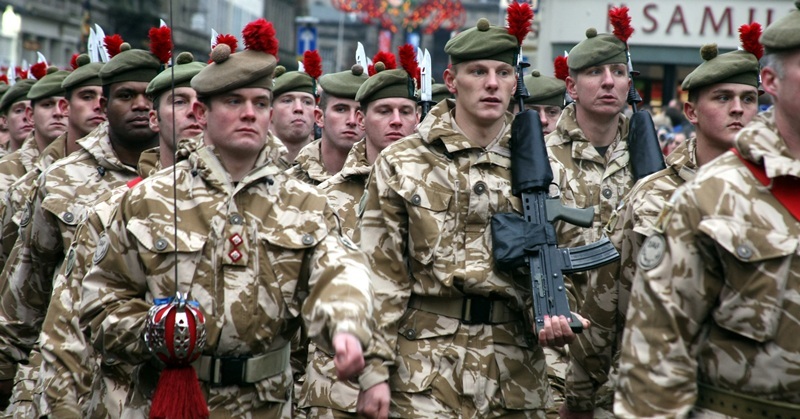The army has moved to allay fears that The Black Watch is under renewed threat of extinction.
It is just five years since Scotland’s six historic regiments were merged and there are fresh concerns that The Black Watch now formally known as the 3rd Battalion, The Royal Regiment of Scotland could be sacrificed as part of a cost-cutting exercise.
The army is to cut 12,000 of its 102,000 posts by 2015 and it has been reported that up to eight battalions could be scrapped as part of this process.
It is feared that The Black Watch, which was allowed to keep its name and famous Red Hackle following the 2006 merger, could be in the firing line because of a shortfall in numbers.
General Sir Peter Wall, the chief of general staff, is understood to have told Prime Minister David Cameron that the names and “cap badges” of several historic units, including The Black Watch, could be lost because of the cuts.
The 2006 rationalisation of the Scots regiments was highly controversial and still provokes bitterness among those who fought to retain them. The Royal Scots disappeared entirely and although the then-government promised to maintain the “golden thread” of each regiment’s individual identity, campaigners who fought to retain the regiments are sceptical the vow will be honoured.’Slow death’Jeff Duncan, who led the Save The Scottish Regiments and the Reinstate Our Army Regiments campaigns, said: “In some senses the looming cuts to battalions in Scotland are little more than unfinished admin, or if you like a ‘slow death’ for regiments such as The Black Watch.
“When Labour ignored huge public and political protest in 2004/5 and allowed the Scottish regiments to be disbanded and amalgamated, this exposed the remaining battalions to unlimited and much easier ‘culls’ in the coming years.”
Mr Duncan said The Black Watch’s identity had already been eroded in the wake of the 2006 merger. “There is precious little left of the identity of The Black Watch and I have no doubt after this 2011/12 reduction it will be even further eroded.
“Labour and the Conservatives have failed to respect and protect the Scottish regiments from a near total loss of identity and in the case of the Royal Scots total disbandment. I fear The Black Watch are just being written out of our history, albeit in a more torturous and slow fashion.”
However, an army spokeswoman said the rumours that The Black Watch faces the axe are unfounded.
“There is absolutely no truth in this it is all complete speculation,” she said. “Although the chief of general staff did say battalions would have to be cut, nobody has said it would be one particular battalion.”
However, she added that the army will have to find a way to reduce its numbers significantly over the next four years. “It is a fact that there will be a reduction in manpower.”
Despite being a small part of a larger regiment since 2006, The Black Watch has received widespread praise throughout its various campaigns, most recently its seven-month tour of duty in Afghanistan.
The battalion helped uncover insurgent drug factories as part of Operation Panchai Palang (Panther’s Claw) and also Operation OUBA 3. As well as being known for their assaults on the Taliban, the soldiers were also recognised for their friendly approach with locals and were known by fellow troops as “the canny Scot.”
